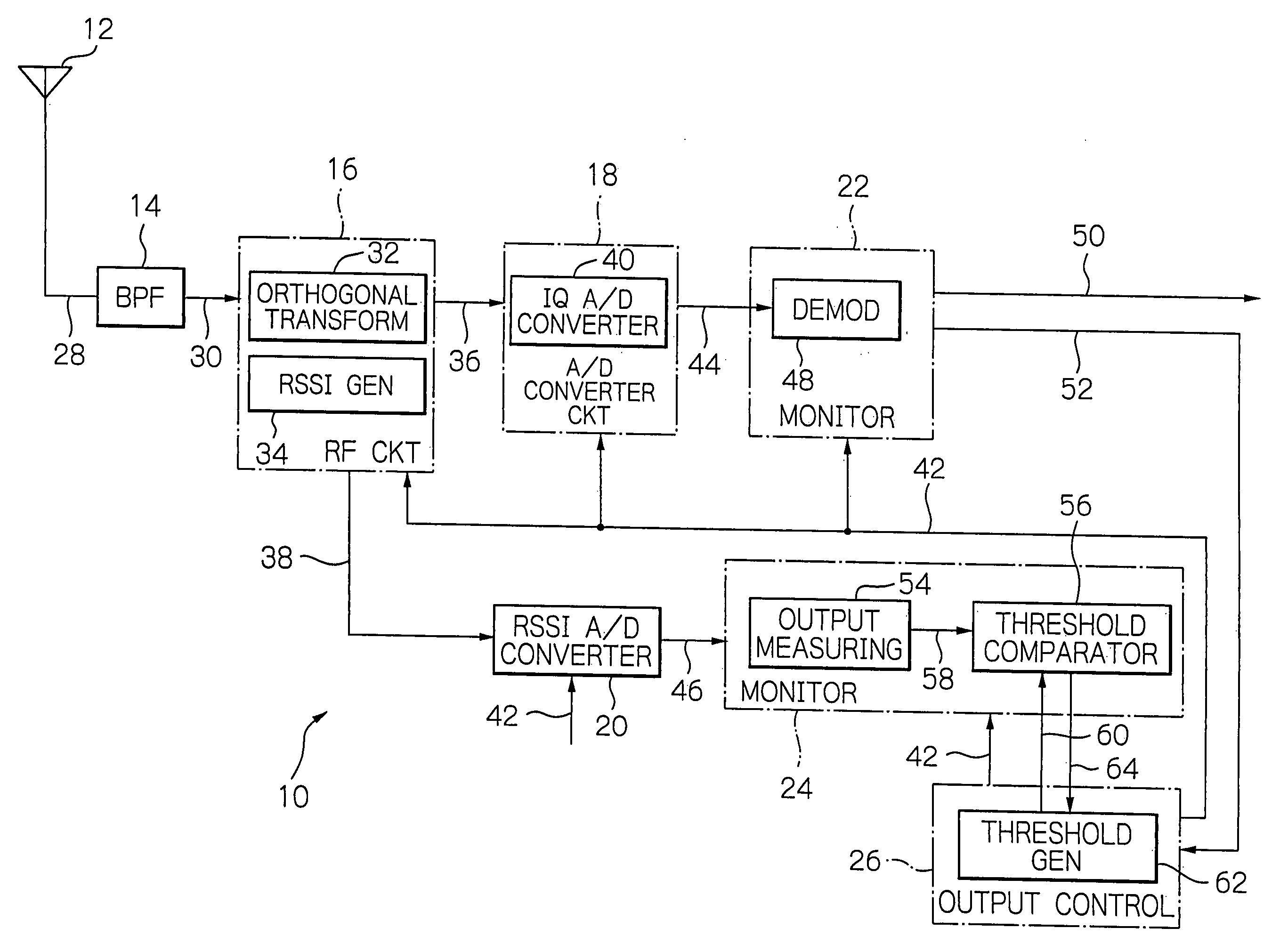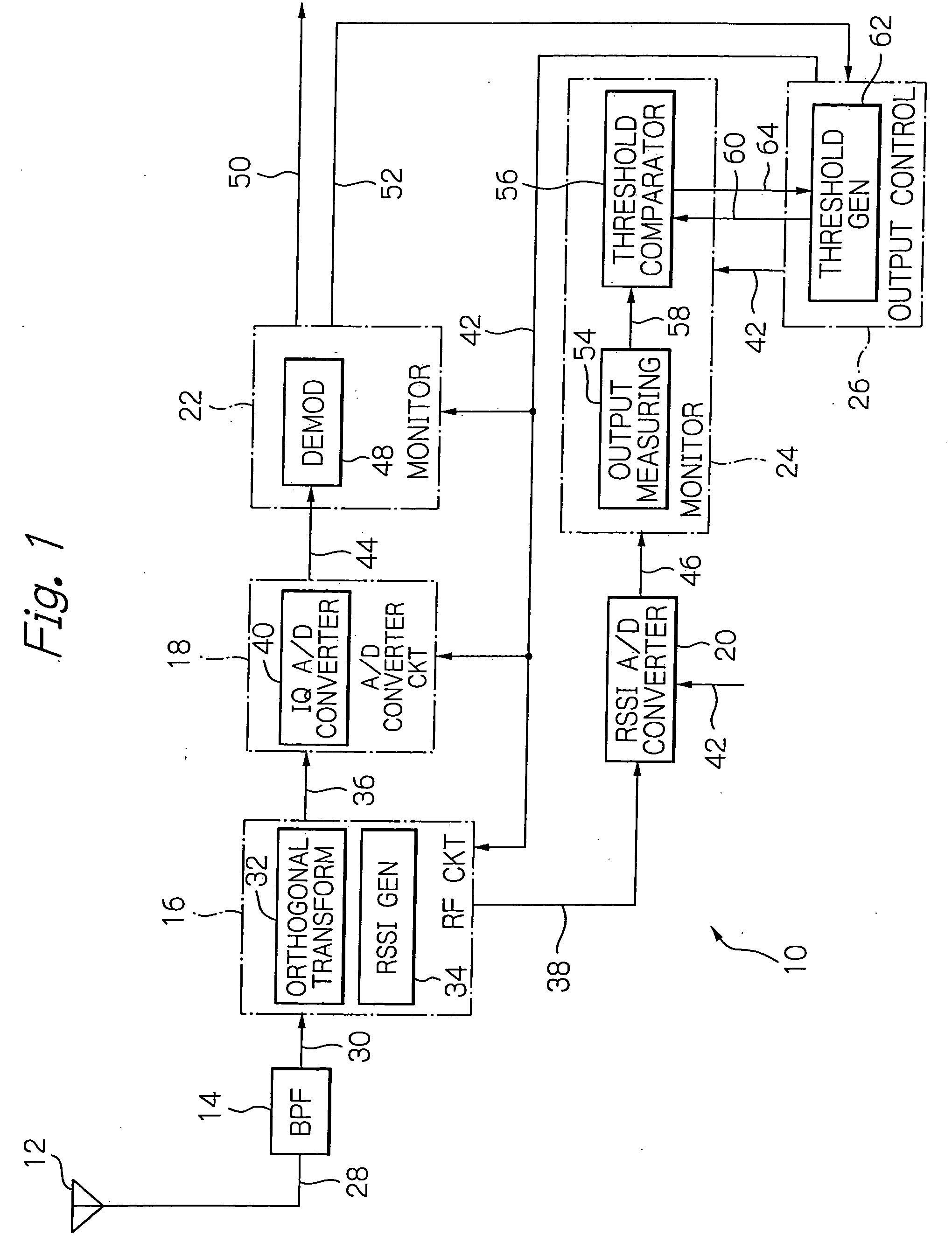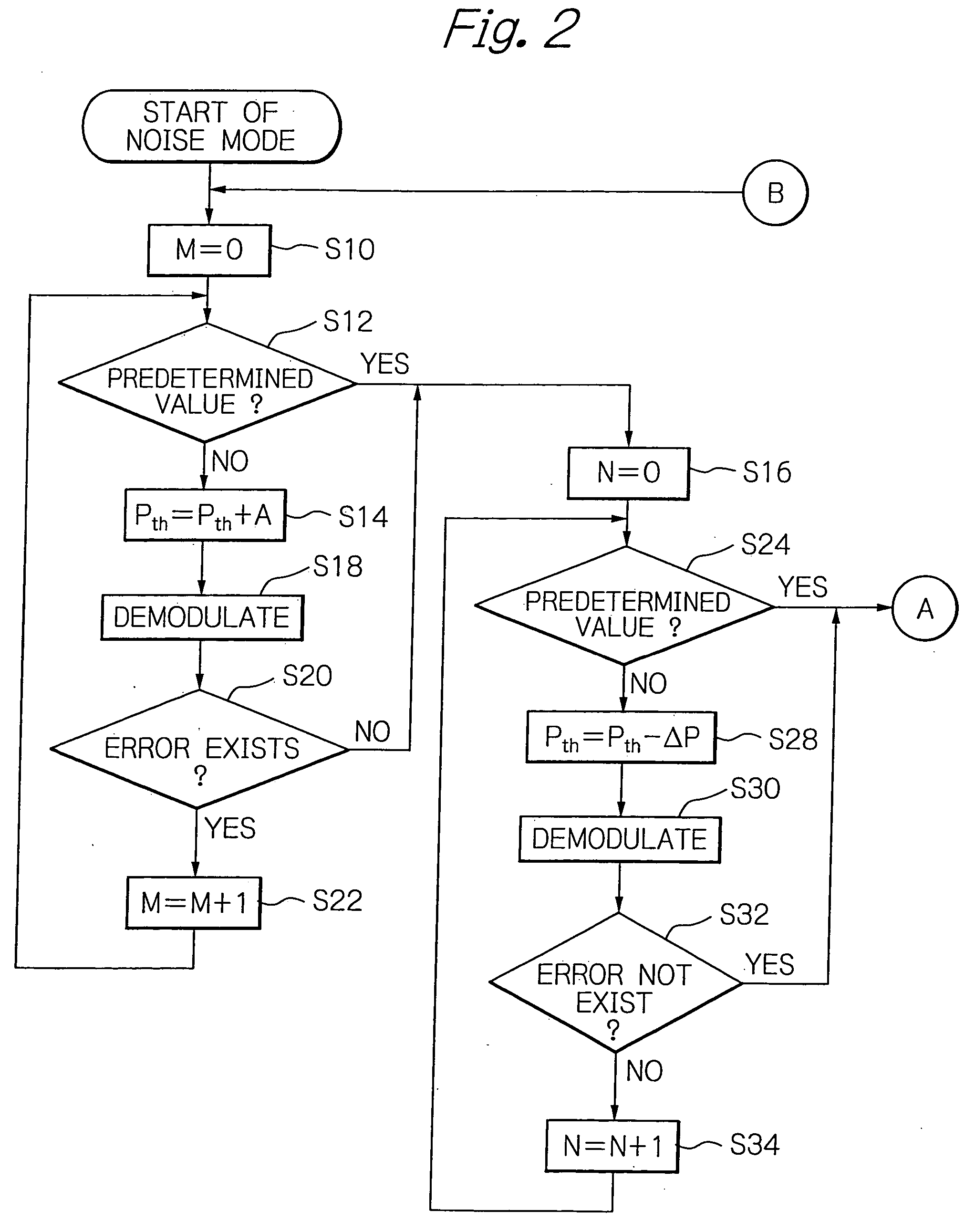Data receiver adaptive to RSSI and a method of determining its threshold
a data receiver and threshold value technology, applied in data switching details, diversity/multi-antenna systems, transmission monitoring, etc., can solve the problems of short battery life, difficult estimation of received signals, and high rssi value of received signals, and achieve the effect of reducing convergence tim
- Summary
- Abstract
- Description
- Claims
- Application Information
AI Technical Summary
Benefits of technology
Problems solved by technology
Method used
Image
Examples
Embodiment Construction
[0026] The preferred embodiments of the data receiver according to the invention will be described in detail with reference to the accompanying drawings. The illustrative embodiment is directed to a modem 10 to which a data receiver is applied according to the invention.
[0027] As shown in FIG. 1, the modem 10 comprises an antenna 12, a bandpass filter (BPF) 14, a radio frequency (RF) circuit 16, an analog-to-digital (A / D) converter circuit 18, a received signal strength indication (RSSI) analog-to-digital converter 20, monitors 22 and 24, and an output control 26, which are interconnected as illustrated. For the modem 10 in FIG. 1, since the invention is aimed mainly at its receiver facility, description will be omitted on its transmitter facility. Likewise, elements not directly relevant to understanding the invention are omitted from the figures and description. The antenna 12 provides functions to catch incoming radio waves and emit a transmitting signal received from the RF cir...
PUM
 Login to View More
Login to View More Abstract
Description
Claims
Application Information
 Login to View More
Login to View More - R&D
- Intellectual Property
- Life Sciences
- Materials
- Tech Scout
- Unparalleled Data Quality
- Higher Quality Content
- 60% Fewer Hallucinations
Browse by: Latest US Patents, China's latest patents, Technical Efficacy Thesaurus, Application Domain, Technology Topic, Popular Technical Reports.
© 2025 PatSnap. All rights reserved.Legal|Privacy policy|Modern Slavery Act Transparency Statement|Sitemap|About US| Contact US: help@patsnap.com



